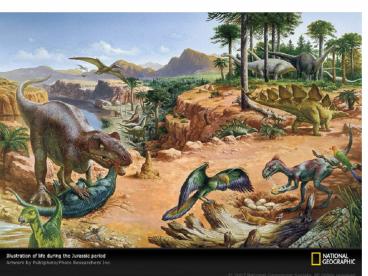Relative Dating Powerpoint - PowerPoint PPT Presentation
1 / 33
Title:
Relative Dating Powerpoint
Description:
Time and Geology The Key to the Past Relative Time- this rock is older than that Principles Used to Determine Relative Age Unconformities Correlation The ... – PowerPoint PPT presentation
Number of Views:1295
Avg rating:3.0/5.0
Title: Relative Dating Powerpoint
1
(No Transcript)
2
(No Transcript)
3
Trilobite
4
(No Transcript)
5
James Hutton- The first Geologist!
6
Time and Geology
Sir Charles Lyell
Image source www.mnsu.edu/emuseum
7
The Key to the Past
- Relative Time- this rock is older than that
- Principles Used to Determine Relative Age
- Unconformities
- Correlation
- The Standard Geologic Time Scale
- Index Fossils
- Absolute Time- this rock is 28 million years
old - Principles of radioactive decay
- Instruments
- The age of the Earth
8
Important Figures in Geologic Time
- James Hutton (1726-1797) Native of Edinburgh,
Scotland. Father of modern Geology. Published
Theory of the Earth in 1785 in which he
outlined that geological features and ancient
rocks could be explained by present-day physical
and chemical processes. - Charles Lyell (1797-1875) Rebelled against
prevailing thought, which was rooted in Biblical
interpretation and Catastrophism. His main
contribution was the development of
Uniformitarianism (Actualism). The present is
the key to the past - Modern view holds that processes that operate
today have shaped the Earth through Geological
Time, but rates may not have always remained
constant.
9
Important Relative Age Dating Principles
- Original Horizontality all beds originally
deposited in water formed close to horizontal
10
(No Transcript)
11
Superposition within a sequence of undisturbed
sedimentary or volcanic rocks, layers become
younger, upward
12
Lateral Continuity original sedimentary layers
extend laterally until it thins out at edges
rocks that are otherwise similar, but are now
separated by a valley or other erosional feature,
can be assumed to be originally continuous.
13
(No Transcript)
14
Cross-cutting Relationships disruptions in any
rock sequence occurred after the youngest
established event in the undisturbed sequence Ie.
A rock or fault is younger than any rock (or
fault) through which it cuts
15
(No Transcript)
16
Trip Through Time
17
(No Transcript)
18
(No Transcript)
19
Sedimentary Deposition
20
(No Transcript)
21
Intrusion
22
Tilting Erosion
23
Subsidence and New Marine Deposition
24
Missing Formation
25
Dike Event
26
Erosion and Exposure
27
Subsidence Deposition
28
Fluvial Deposition
29
Complex Subsurface Geology
30
Contact Relations
31
(No Transcript)
32
(No Transcript)
33
(No Transcript)































